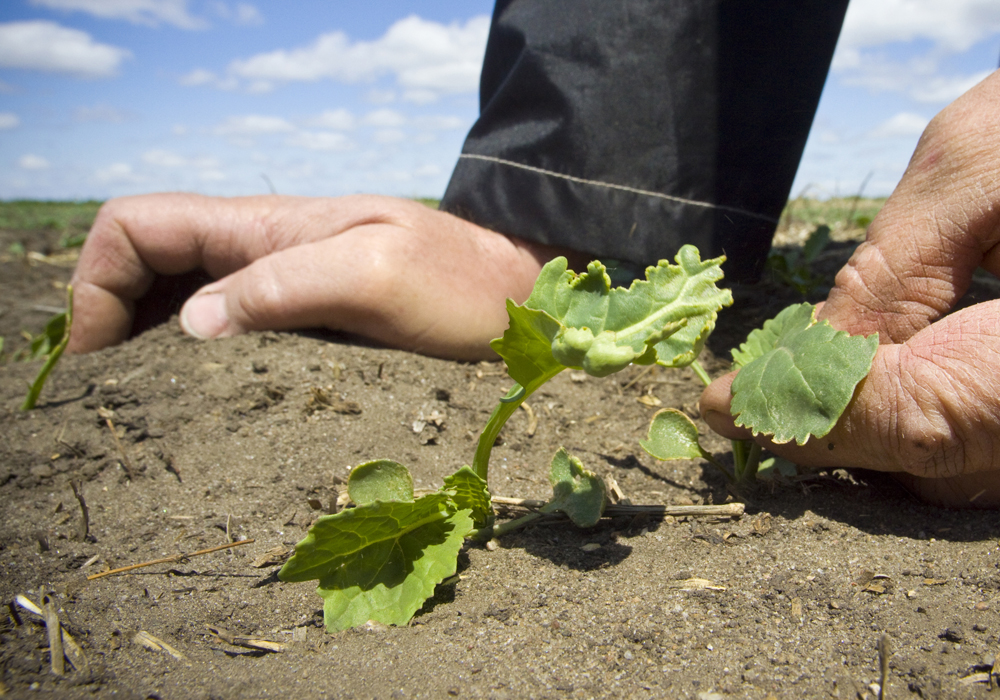EDMONTON — Wide swaths of the Prairies can expect a cool and dry spring, and southern regions will receive more precipitation than normal once the rain finally comes in early June, according to Drew Lerner’s spring and summer forecast.
“Several things influence our weather, and it’s interesting to see how well they line up,” the president of World Weather Inc. said during a recent presentation at FarmTech in Edmonton.
“We’ve got some pretty good signals, so the forecast here is going to be somewhat confident for a big part of the Prairies.”
Read Also

Manitoba extends Crown land rent freeze
Manitoba government links the continued rental rate freeze on grazing and forage leases to economic and environmental challenges facing the industry
Lerner based his forecast on the 18-year cycle of the upper atmosphere wind patterns and examined the weather patterns of 1966, 1984 and 2002 for clues of what may happen this summer.
“If you go back, there is a repeating pattern that happens in the atmosphere on a regular basis and it controls the jet stream,” the agricultural meteorologist said.
“It helps us to determine where the storms are going to come from and where they are going to go.”
Another weather predictor is warmer-than-normal water in the Gulf of Alaska, which Lerner sees sticking around at least until spring and will continue to cause a northwesterly flow pattern in the upper atmosphere.
He said a strong high pressure ridge that extends from the Gulf of Alaska down to the Prairies can pull cool arctic air with it to the Prairies.
“What does that mean for the Prairies? That means more cold air,” Learner said.
“We’re going to have a very cold spring, especially for the eastern Prairies — Manitoba and Saskatchewan in particular,” he said.
“Alberta is going to be in a better position because it will be closer to the axis of the ridge.”
The sun is also at the solar minimum in its 10 to 12 year cycle, which tends to have a cooling effect on temperatures.
Lerner said February will have a warmer bias in the western two-thirds of the Prairies, while Manitoba will likely have below average temperatures.
March will bring cooler temperatures across the Prairies except for the western part of Alberta.
Lerner expects March precipitation to be below average over a large area in the middle of the Prairies, including areas that are currently snow free in central and southern Alberta and south-western Saskatchewan.
“These are areas that still have moisture deficits from last year, so if you’re in central Alberta or southwestern parts of Saskatchewan, in the planting season it may turn a little dry on you,” Lerner said.
“You may get nervous, but be patient. We did get moisture last autumn and there is moisture down there a little ways, so if we can get a nice little half-inch rain it may be enough to get crops started. It will be a bit of a drier bias, but not a serious repeat of the last couple years,” Lerner said.
He said if the high pressure ridge prevails over Alberta and British Columbia, it should suppress precipitation in northern Alberta this spring, which would help growers in the area harvest the remainder of their 2019 crop.
Lerner said the colder than normal temperatures will persist until May all the way to Eastern Canada and the U.S. Midwestern.
“We’re going to see frost and freezes occurring frequently in May, at least periodically. We may warm up and have a great period in April, and you’re going to want to get out there and go for it,” Lerner said.
“I encourage you if you’re in the eastern Prairies, no matter how good it looks, don’t get in the field any earlier than normal at least.”
He said precipitation could become an issue in the Prairies in May as a wetter bias sets in.
Once June comes the cold temperature bias will subside somewhat, but there is still a wet bias for the southern part of the Prairies.
“Southern Alberta and Saskatchewan that may be struggling or sweating it a little bit because of the dryness in the spring will be relieved by June fore sure, maybe even late May. So the moisture will come.”
July will likely be the only warmer than average month on the Prairies this summer, he said.
















